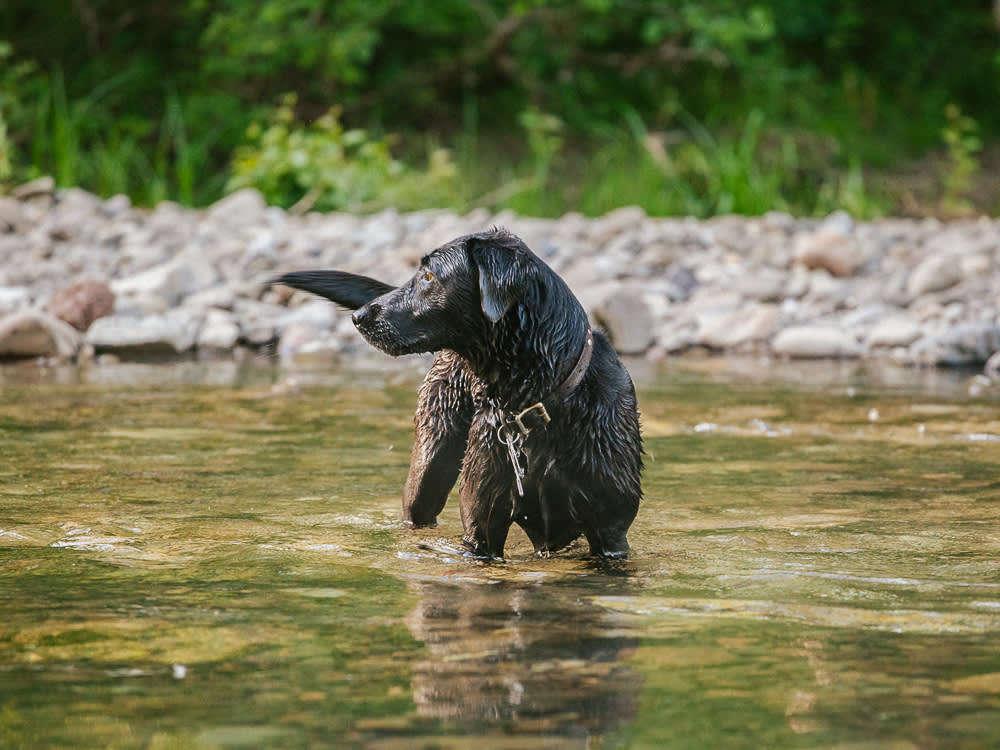Stay Far, Far Away From Blue-Green Algae This Summer
This stuff is already popping up across the U.S., and it’s super dangerous for your dog.
Blue-green algae and the danger it poses for pups pops up in the news every time hot weather comes around. This summer, it has already been spotted in Floridaopens in new tab, Wisconsinopens in new tab, Indianaopens in new tab, and Kansasopens in new tab, but it is likely to pop up in other places, including where you live. While most algae are harmless, some species of blue-green algae produce toxins that can kill a dog within minutes. Dogs who survive (who are often exposed to low levels of toxins) may develop health problems, such as chronic liver disease and possibly tumors — damage that may go unnoticed until it’s severe.
Researchers suspect many deaths are missed because people don’t even realize their dogs were exposed. Vets may not recognize the symptoms, and tests to detect the toxins can be costly and complex. (Blue-green algae can be harmful to humans, too, but deaths are rare.)
Get (totally free) deals for food, treats, accessories, tech and way more pet parenting must-haves.
In recent years, cases of blue-green algae poisoning in dogs have surged because nutrients like phosphorous and nitrogen get washed into waterways from agriculture, lawns, and other sources. Climate change also plays a role. Below, learn how to keep your dog safe from blue-green algae this summer.
How to Spot Blue-Green Algae
Also known as cyanobacteria, blue-green algae thrives in fresh bodies of water during warm weather. There are plenty of ways to differentiate blue-green algae from harmless green, brown, and other kinds of algae.
For one thing, its color isn’t always blue-green. It can also be reddish-purple or brown and other hues. Normally, algae are equally distributed throughout the water. But blue-green algae produces large blooms that are often concentrated along the water’s edge (it may look like slimy paint). These can still taint the water after it looks clear. Blooms may last for a week; their toxins may last three weeks.
Even when blue-green algae isn’t floating on the surface, it may lurk below, moving up and down with available light and nutrients. At night, it often floats to the top, forming a scum. Wind and waves can then concentrate toxic blooms in shallow areas or at the water’s edge — right where dogs like to splash, wade, or drink. The water doesn’t taste bad, vets say, so dogs will lap it up. Some like to gobble down dried algae mats.
How to Protect Your Dog from Blue Green Algae
The Environmental Protection Agency (EPA) recommends opens in new tab that outings with pets to lakes, rivers, and streams include an algae check. Dogs should not drink, swim, or wade in water that is discolored, smells bad, or where there are mats of algae, foam, or scum. If your dog does get into scummy water, rinse them off with tap water immediately, making sure they don’t lick algae from their fur. The toxins can also be absorbed through their skin. If a dog shows signs of poisoning, go to your vet right away.
Here are the signs of blue-green algae poisoning to lookout for:
Weakness or staggering
Difficulty breathing
Drooling
Convulsions
Finally, be sure to report any blue-algae incidents to your state’s Public Health Departmentopens in new tab to prevent other dogs from getting sick.


